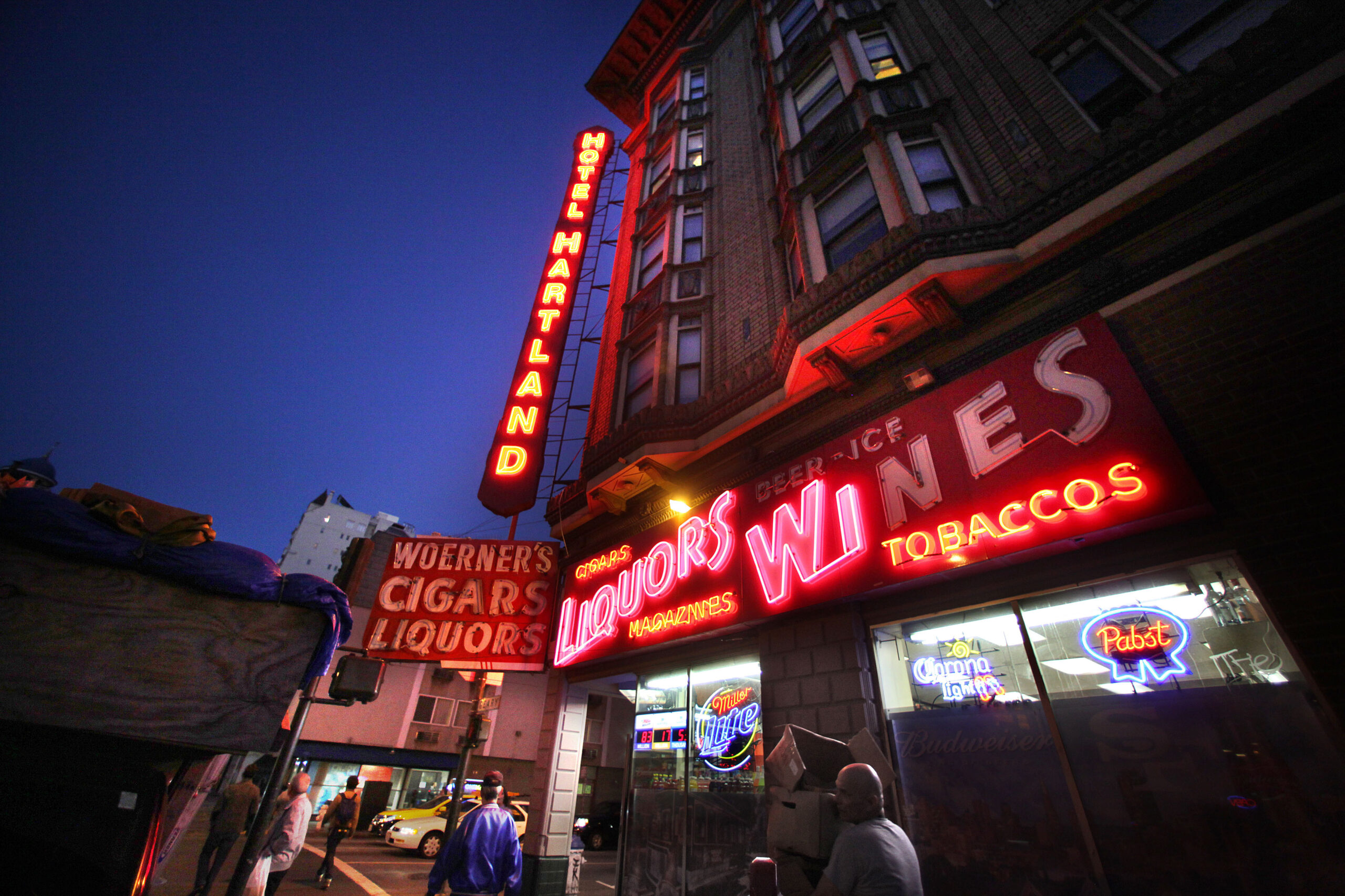Gallery of 7 photos
the slideshow
Making a neon sign is an art. Handmade, the signs can take weeks or even months to sketch out a design, bend the glass and build the sign itself.
But the payoff is worth it: Neon signs last decades and provide a unique, handmade brand to a business and a soft glow of brightness to the street. And San Francisco’s Tenderloin District is home to around a third of the neon in the city, the most of any district.
New legislation will allow more of these handmade signs to pop up, or be restored, in the Tenderloin. Passed at the city’s Board of Supervisors on Tuesday, the new rules make it easier to create new neon signs and to restore old signs that may not conform with current sign rules. It’s legislation that may work as a pilot for similar exceptions in other neighborhoods in the future, but advocates say it’s especially important to the Tenderloin.
“The Tenderloin is our neon home,” said Randall Ann Homan, co-creator of SF Neon, who has been working to pass the legislation.
Supervisor Dean Preston spearheaded legislation to create a Tenderloin Neon Special Sign District at the board in response to community outreach and a document created by the Tenderloin Peoples’ Congress in 2020, which called to restore and encourage neon signs in the district. The new legislation also allows new types of neon signs and for existing signs to be removed for off-site repairs and put back up, even if they break current sign rules.
The changes have been a priority of Katie Conry’s, executive director of the Tenderloin Museum located in the Cadillac Hotel, who had recently found an old photo of a two-story neon sign for the hotel. Wanting to restore the hotel sign and add “The Tenderloin” to the backside, she discovered the city’s sign codes wouldn’t allow a new sign of that type. So she and other community advocates, who see neon as a symbol of the Tenderloin’s cultural history, got to work.
To Homan, who started SF Neon with her husband after they started documenting local signs, the neighborhood’s neon signs tell the story of the community.
Neon signs are built meticulously by hand—and many old signs are even hand-lettered. In the 1940s, their faces used to be baked in porcelain. Those last a long time, but have also been painted over, which was the case with the sign for the Abigail Hotel in the Tenderloin. After getting a city grant to restore the old sign, Neon Works owner Jim Rizzo found the original porcelain outline for the Astor Hotel underneath.
“That really is the background story of neon signs—the history of small businesses that have made it,” Homan said.
Ha Ra is one of those old businesses. Having opened in 1947, it may be one of the oldest still-open bars in the neighborhood. Co-owner Tom Whalen said the bar’s martini glass neon draws customers in with its warm, nostalgic look. It’s just one of the many historic items that welcome patrons in, including an old TV, a 1960s phone booth that’s now a photo booth and historic business licenses for the old Sarong Club that Whalen found when he, Wizz Wentworth and Scott Broccoli bought the bar in 2015.
But Ha Ra’s sign is vulnerable to getting broken in the general mayhem of the Tenderloin, so they put up plexiglass to protect it.
Repairing a neon sign is no simple task, according to Rizzo. He has serviced hundreds of signs in the Tenderloin and done about 10 restorations there. He also helped advise the city on sign restoration techniques, helping Homan create best practices for the city’s sign restoration grant program. He doesn’t mind going out onsite to fix signs, but said few shops do, so the new legislation would allow the city and local businesses to bid out sign restoration to other local shops, making the process more affordable.
Rizzo said just three things can ever be broken in a neon sign—the glass, the transformer or the wires. Most often, it’s the transformer that burns out first, and the glass and wires can be repaired or replaced. But the signs last decades, much longer than their LED counterparts.
“The biggest thing is getting at it,” Rizzo said.
Sign regulation is one of the only things in the city that doesn’t require project-by-project approval in the city—if it complies with local codes, it can go up, according to Dan Sider, the chief of staff at the city’s planning department.
Sign rules in the city are tied to a neighborhood’s zoning. But they are fairly restrictive in nature, reflecting a general distaste for massive branding: For example, a 2002 ballot measure banned all new billboards on private property in the city. There are just a few exceptions to sign rules; one comes in the form of special sign districts throughout the city, including on Market Street and in Jackson Square.
“We are uniquely unbranded, and that was very intentional,” Sider said.
So allowing historic signs back into the Tenderloin would be symbolic—not just of their proliferation in the neighborhood, Conry said, but of the importance of reintroducing light and celebration to a neighborhood that is often literally and figuratively in the dark.
“We have an opportunity to turn them back on and provide vibrancy to the streets,” Conry said.
